Eyelid Surgery Sydney
Your complete guide and quick links to everything you want to know about Eyelid Surgery in Sydney!
How Upper & Lower Eyelids Change With Ageing
The signs of eyelid ageing most commonly appear from the early 30’s onwards but in some they can start to appear much earlier, even in the mid-20’s. Interestingly, the changes tend to run in families with similar appearances often found in siblings and in one or both parents.
Upper Eyelid Changes
As we age, the skin of our Upper Eyelids starts to lose its elasticity causing it to loosen and eventually sag creating an appearance of ‘heaviness’ or ‘hooding’ of the eyelids. Sometimes, muscle laxity and excess eyelid fat also contribute to the ‘heavy’ appearance.
This ‘heavy’ appearance of the upper eyelids can look even worse if there is also a degree of contributory brow ptosis (droop). Accordingly, it is very important at your Initial Consultation for your doctor to determine if there is any brow ptosis contributing to your upper lid ‘heaviness’. If there is, a Brow Lift may need to be added to the procedure.
‘Hooding’ of the upper eyelids with loss of the crease between the eyelid margin and eyebrow produces the ‘look’ commonly described by patients as ‘tired looking’ eyes.
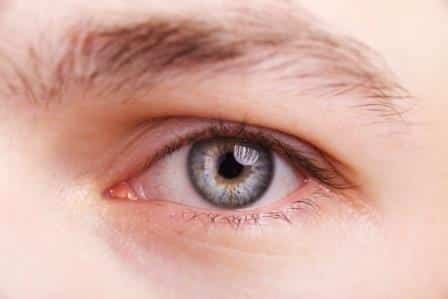
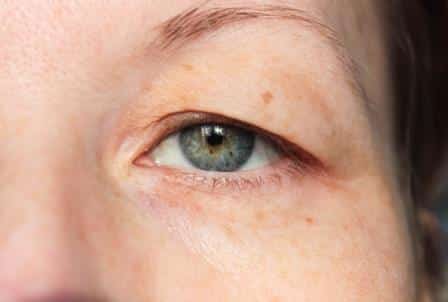
Lower Eyelid Changes
As we age, the Lower Eyelids also age and may develop ‘bags’ with, or without, loose skin.
The ‘bags’ are actually protrusions of the normal fat tissue that cushions the eyeball within the eye socket. These fatty protrusions can appear if the tissue layers holding them in place weaken and allow the fat to fall forward.
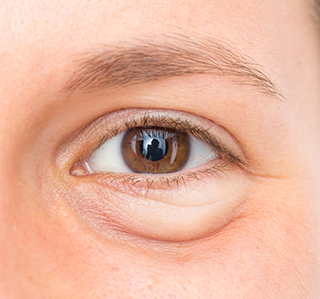
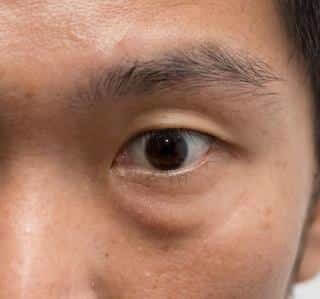
What Is Eyelid Surgery?
Eyelid Surgery, known medically as Blepharoplasty, is a procedure to rejuvenate the upper or lower eyelids.
In Upper Eyelid Surgery, excess eyelid skin is removed along with any excess eyelid fat.
In Lower Eyelid Surgery, protruding fat ‘bags’ are removed and the accompanying loose skin tightened. Skin tightening is achieved by excision or Laser Resurfacing. In some cases, a portion of protruding fat may be transposed to fill ‘hollows’ or ‘tear troughs’ under the eyes.
Upper and Lower Eyelid Surgery can be performed at the same time as other facial surgery such as a Face Lift or Brow Lift.
How Is Eyelid Surgery Done?
In the best interests of patient safety and comfort, all Eyelid Surgery procedures are performed in a Licensed Day Hospital under local anaesthesia with sedation or general anaesthesia, administered by our Specialist Anaesthetist in Sydney.
Upper Eyelid Surgery takes around 1-1½ hours. Lower Eyelid Surgery can take slightly longer.
You can go home 1-2 hours after your procedure, but you cannot go home alone. You must be accompanied by a responsible adult.
Post-operative discomfort is usually mild only. It is easily relieved by the pain-relievers you Surgeon will have prescribed.
Upper Eyelid Surgery
- After careful pre-operative marking, you will be taken to Theatre.
- When you have fallen asleep, your Surgeon will inject a local anaesthetic/adrenalin solution into the eyelid skin marked for removal.
- Following precisely the skin markings, your Surgeon will remove the excess eyelid skin along with any excess muscle and excess fat.
- The skin is then meticulously closed with ultra-fine sutures.
- Sutures are removed 7 days later.
- Scars are initially pink but can be camouflaged with make-up until they fade to white over time.
Lower Eyelid Surgery
In contrast to Upper Eyelid Surgery which always involves an incision on the skin, Lower Eyelid Surgery can be performed in either of two ways:
- By Scalpel Incision across the eyelid skin just under the eyelashes. This is known as the Trans-Cutaneous Technique.
- By Laser or Electrosurgical Incision on the INSIDE of the lower eyelid. This approach is known as the Trans-Conjunctival Technique. Its advantages over the Trans-Cutaneous Technique are:
- It avoids any external scar on the skin.
- No internal sutures are necessary.
- It allows direct access to the protruding fat bag from the ‘inside’. This avoids any cutting of the skin, muscle or orbital septum – the subsequent scarring of which can sometimes lead to lower lid shape deformities.
- If you have only small-medium sized ‘bags’ of fat, and your lower eyelid skin has good elasticity, nothing more needs to be done.
However, if you have:
- Large fatty ‘bags’ with eyelid skin stretched over them; or
- Medium-sized ‘bags’ with reduced skin elasticity; or
- Any size ‘bags’ with very loose or wrinkled skin…
… you may need the Trans-Cutaneous Technique to address the loose skin.
Watch Our Eyelid Surgery Animation Videos
Upper Eyelid Surgery
Lower Eyelid Surgery
Recovery After Eyelid Surgery
- Pain after Eyelid Surgery is usually mild only. It can be easily relieved by the pain-relievers your Surgeon will prescribe.
- Rest at home during the first 24 hours. Do not exert yourself. Avoid strenuous activities or exercise during the first 2 weeks after surgery.
- Bruising and swelling after surgery is normal and expected. It is more pronounced the day after surgery. It then proceeds to settle over the next 2 weeks.
- Sleep on at least two pillows to keep your head elevated. This will help to reduce swelling.
- Apply cold compresses as often as possible during the first 48 hours to reduce swelling, 10 minutes on and 10 minutes off is recommended.
- Contact lenses can usually be worn after 14 days but only if they feel comfortable.
- Return to the Clinic after 7 days for removal of any sutures.
- Make-up: You can resume wearing makeup 48 hours after removal of sutures.
Final Scars After Eyelid Surgery
- With Upper Eyelid Surgery, the scar for most of its length is hidden within the eyelid’s natural crease, and is barely visible.
- With Lower Eyelid Surgery, there is no external skin scar with the Trans-Conjunctival Technique. In the Trans-Cutaneous Technique, there will be a fine scar across the eyelid skin immediately below the eyelashes.
- Most blepharoplasty scars eventually fade to white and inconspicuous. However, if you have brown or Asian skin, you may be at risk of developing pigmented scars.
Upper Eyelid Surgery 'Before & After'
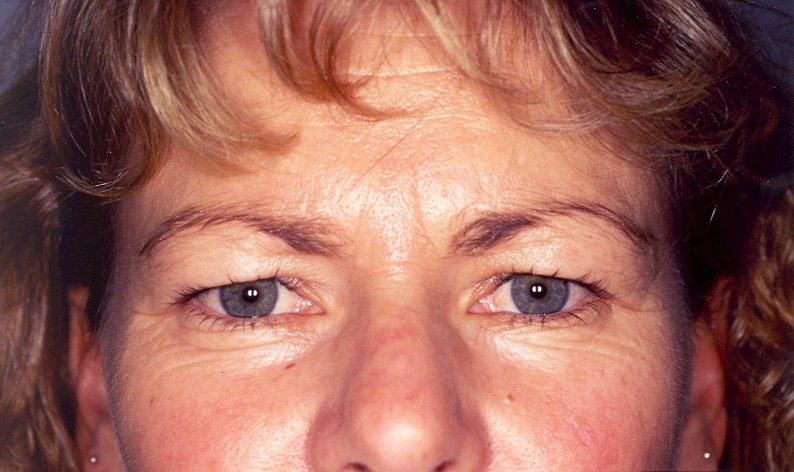
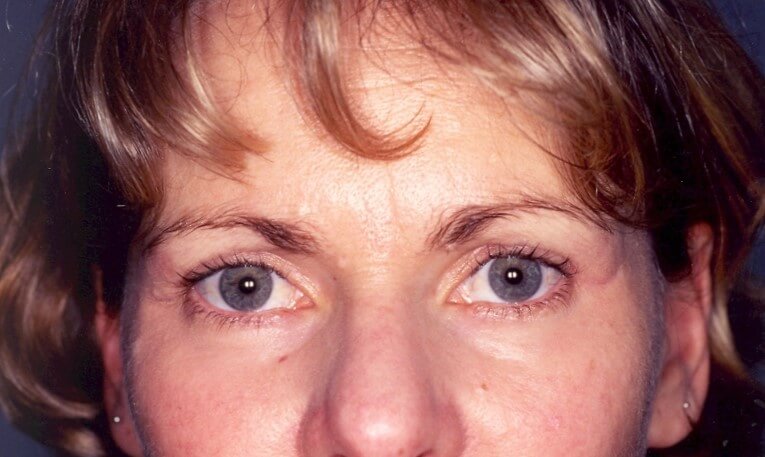
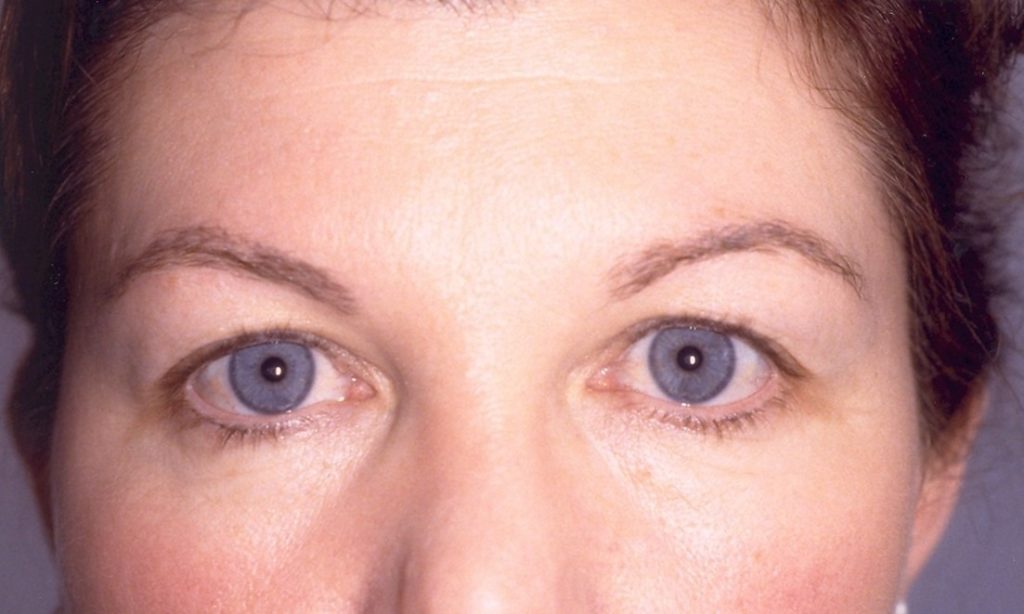
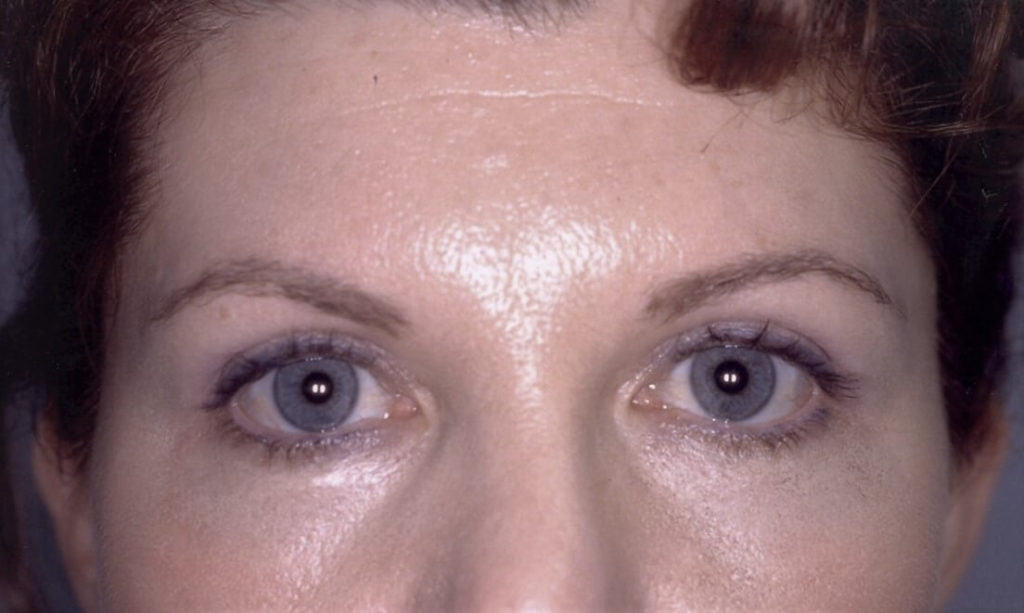
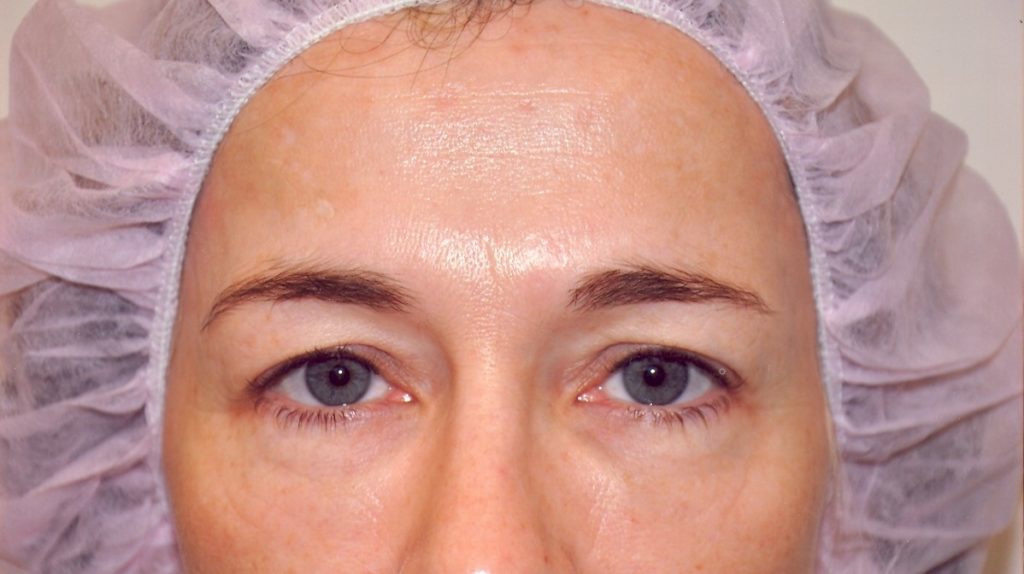

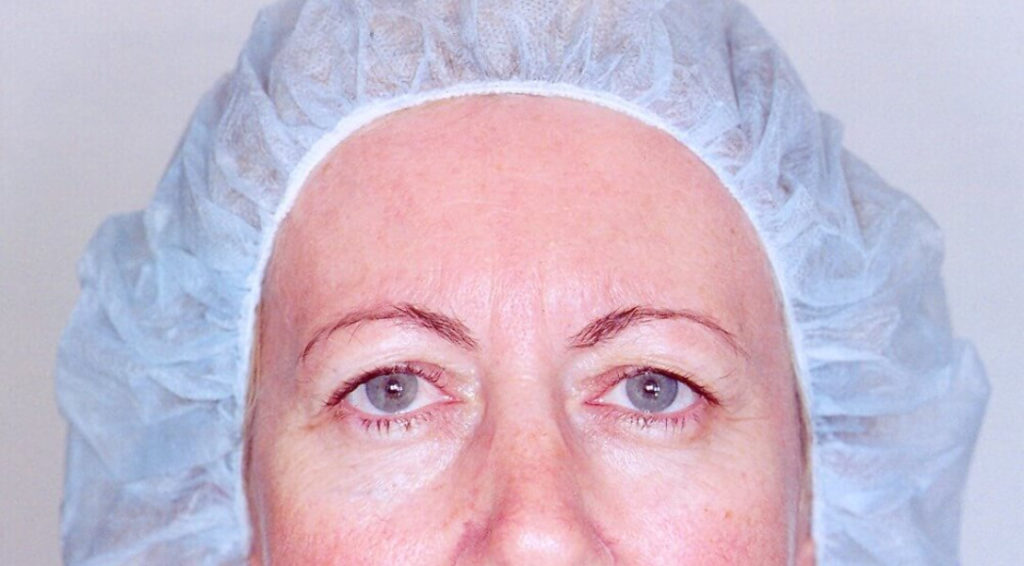
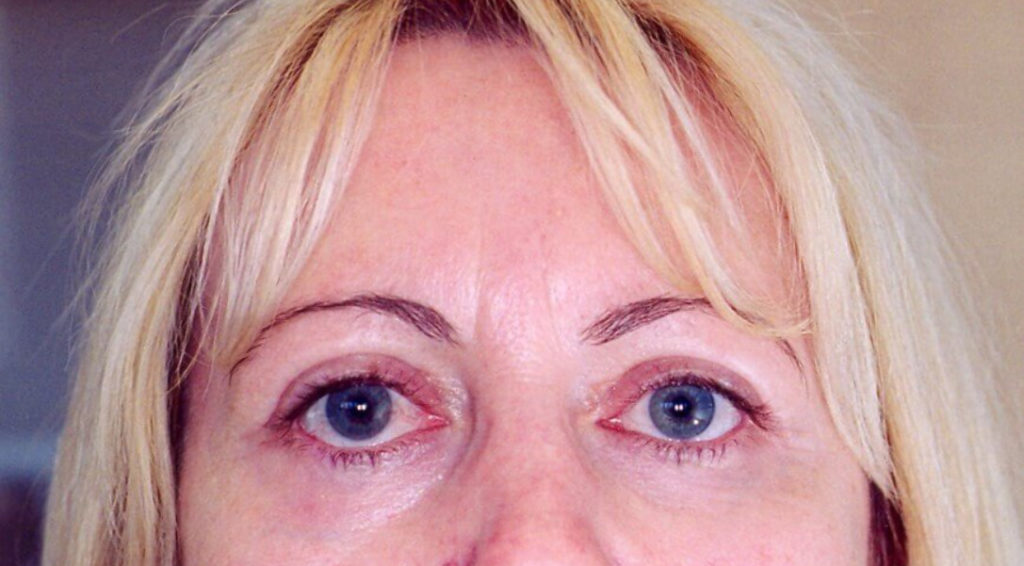
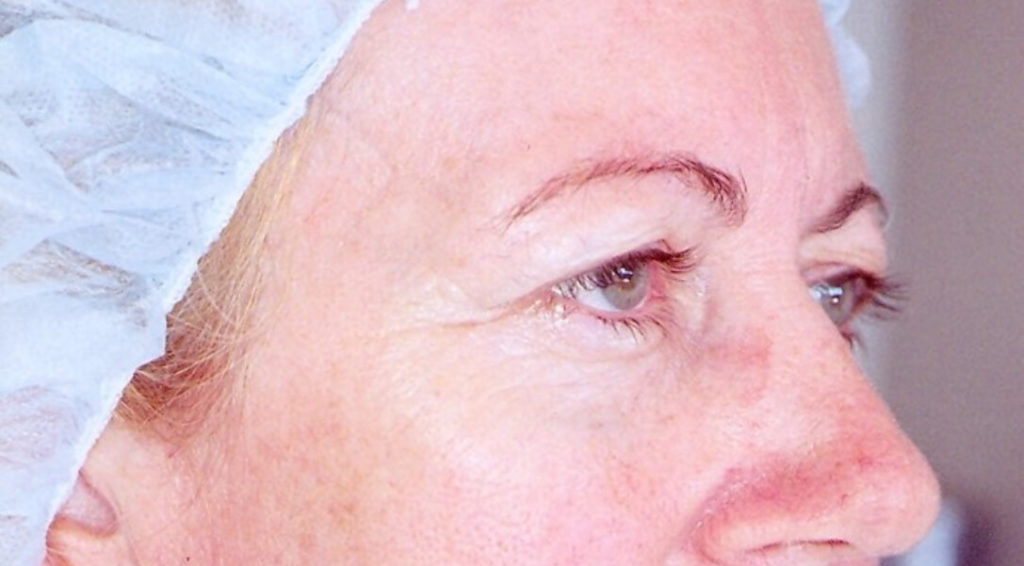
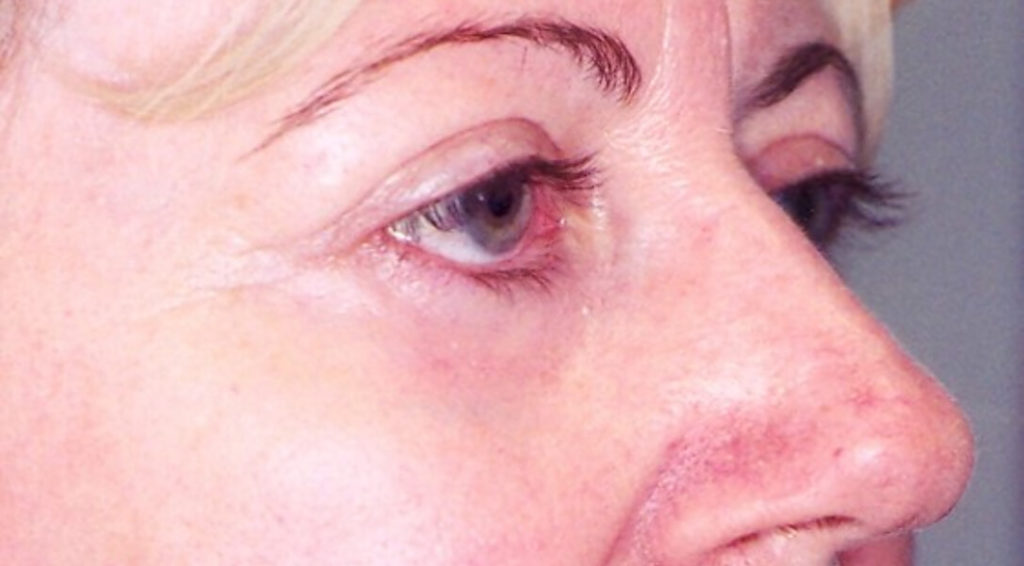
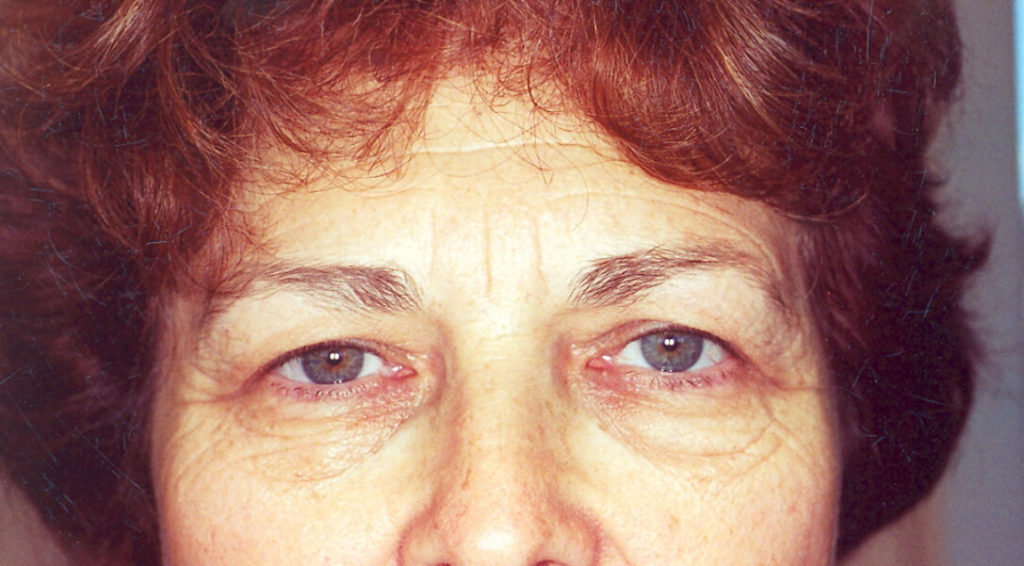
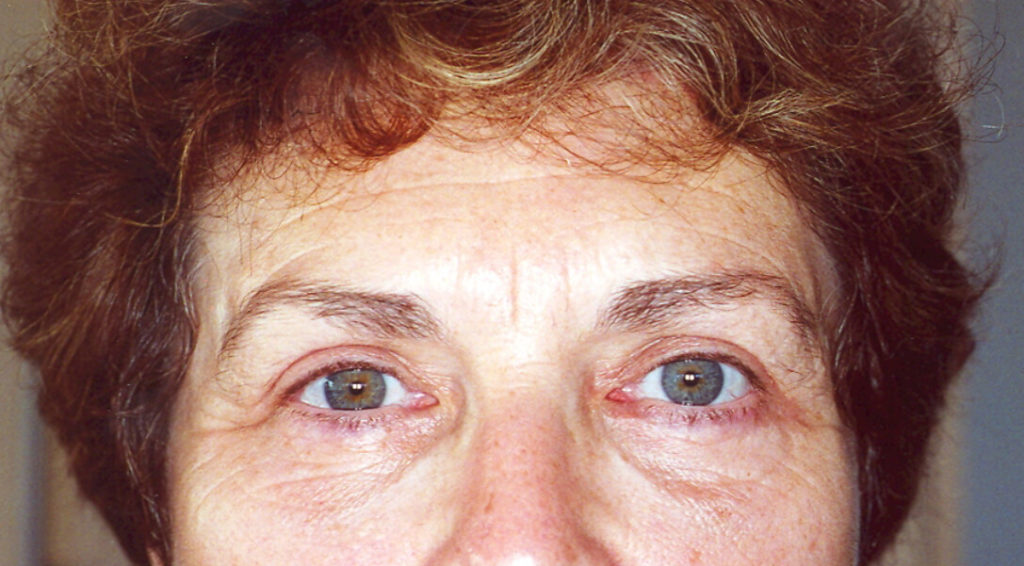
Lower Eyelid Surgery 'Before & After'
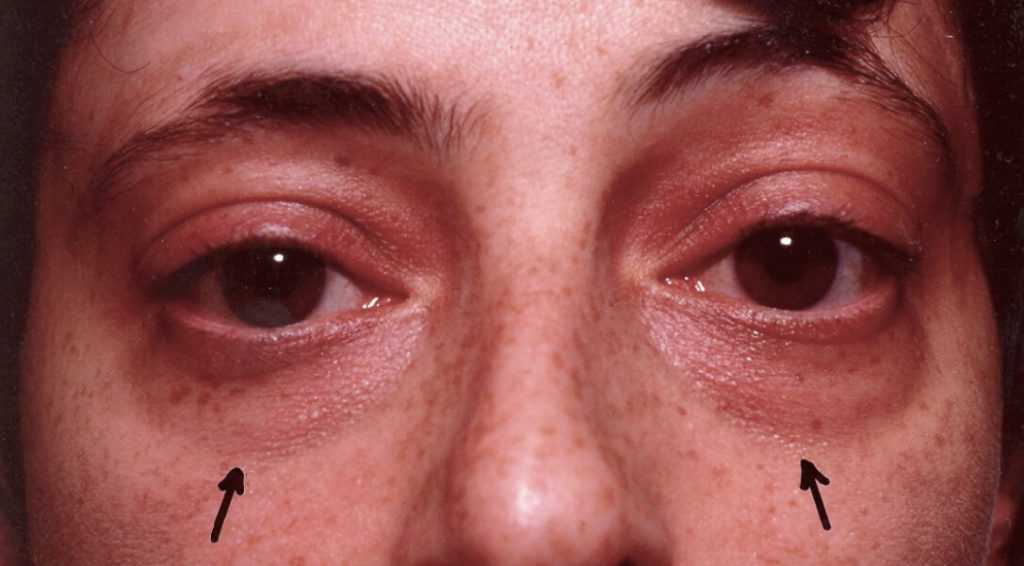
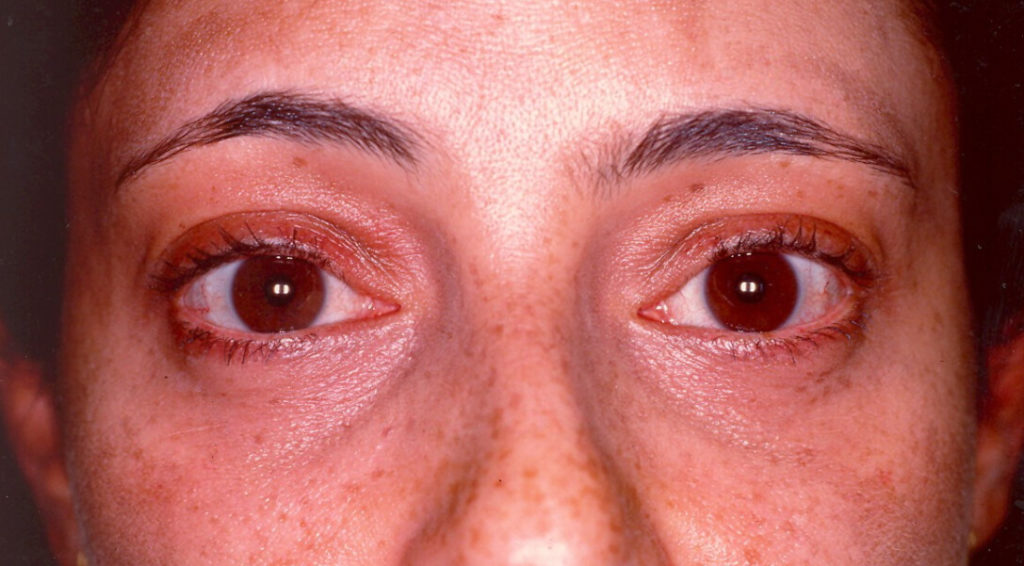


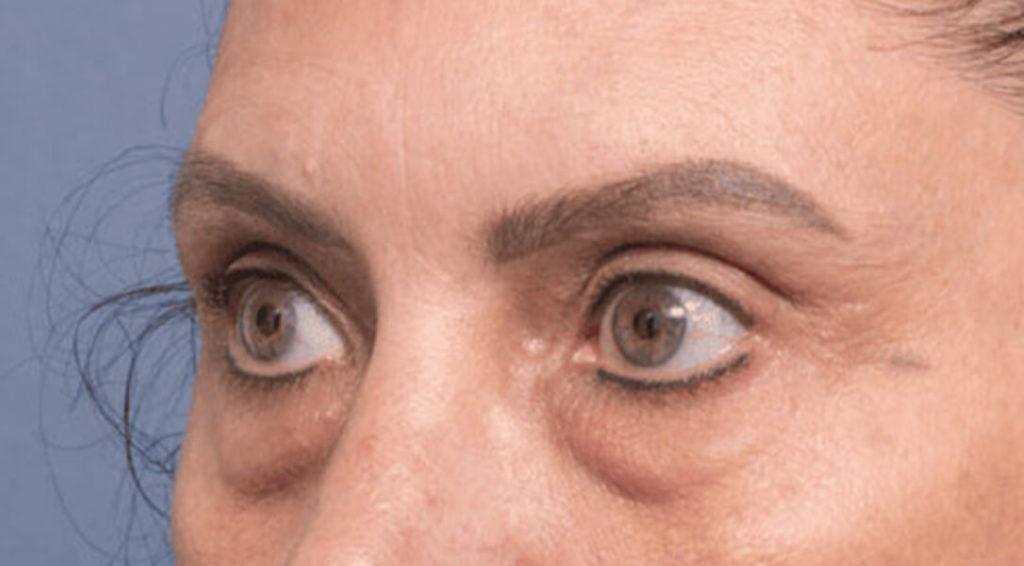


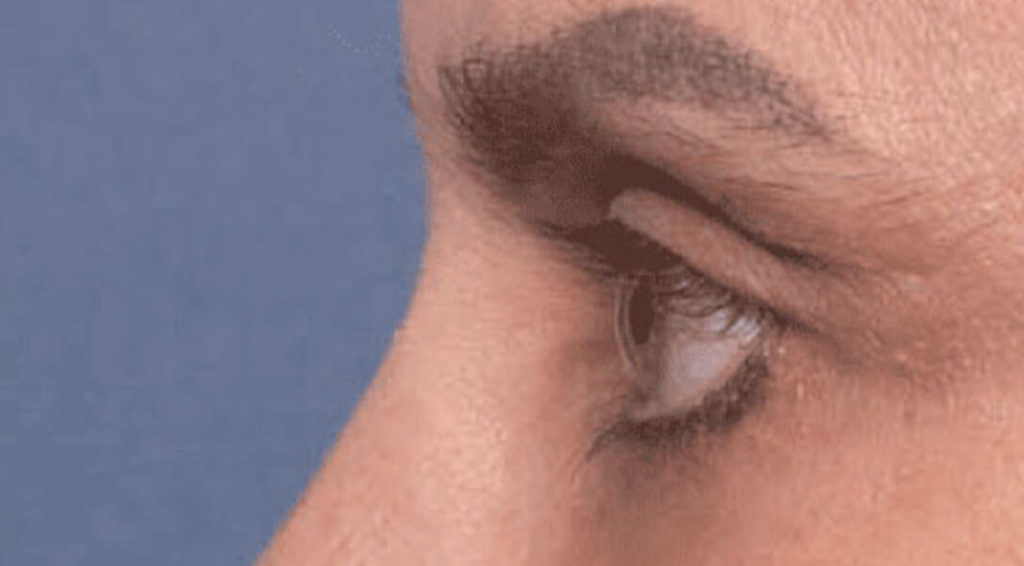
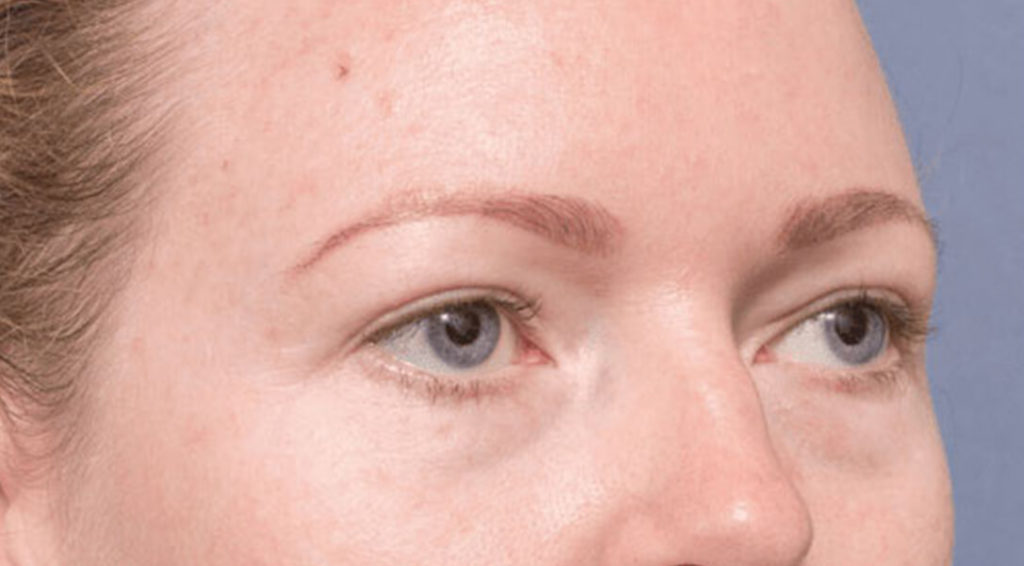

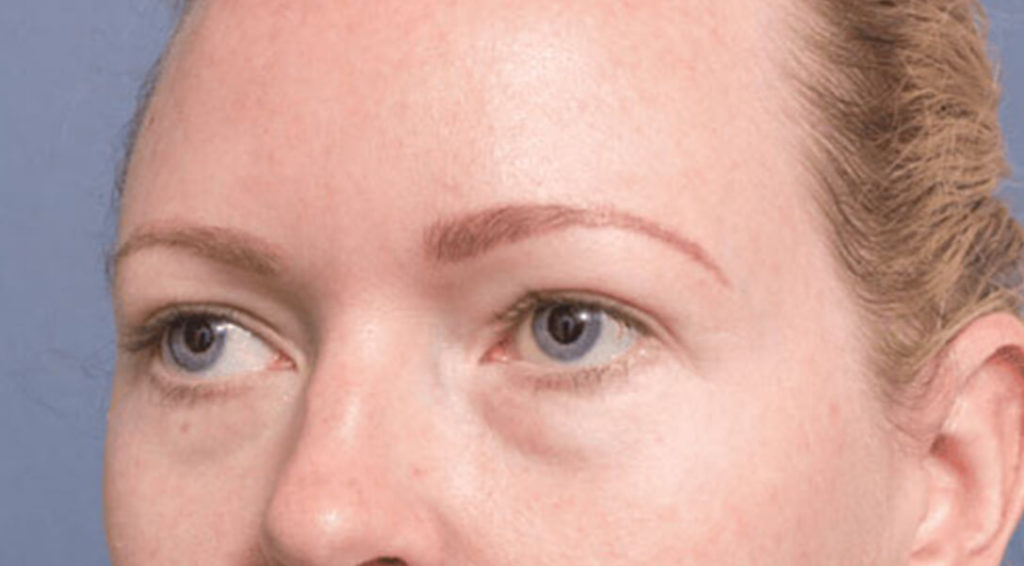

Upper + Lower Eyelid Surgery 'Before & After'
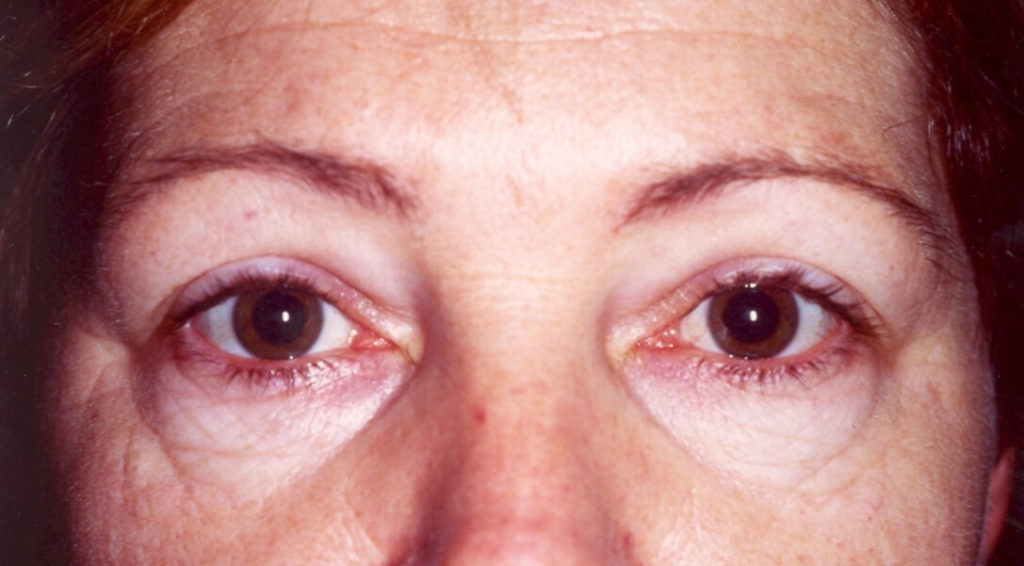
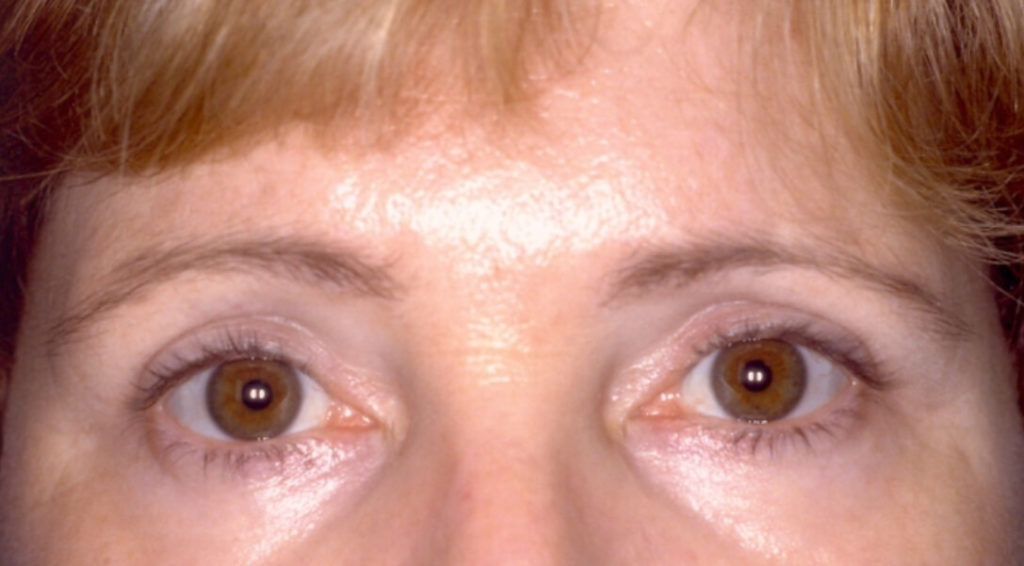
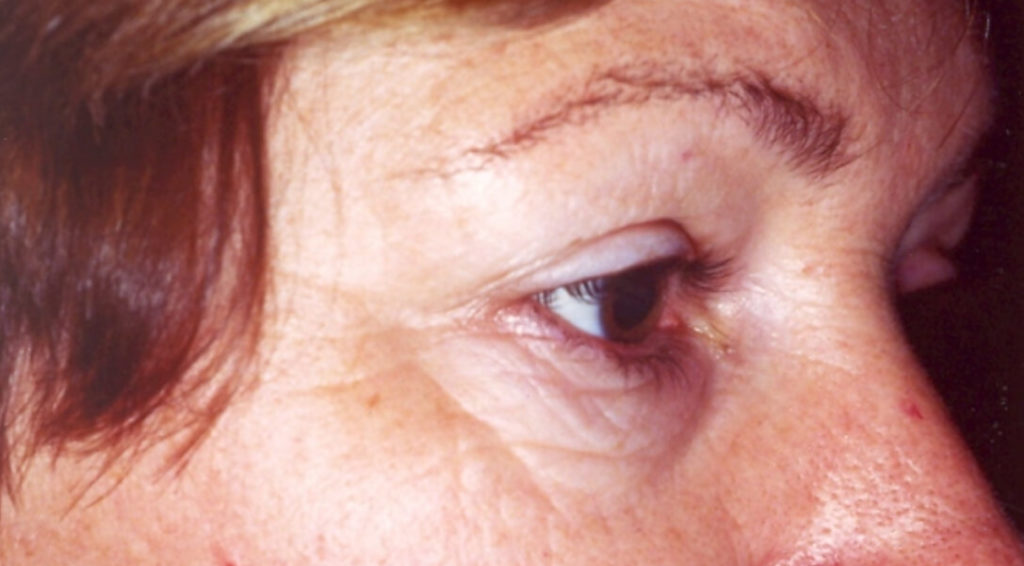

Pros & Cons of Eyelid Surgery
The Pros:
- Upper Eyelid Surgery can make your eyes and whole face look fresher and more energetic. Droopy upper eyelids can make you look sleepy, tired, and even older than you really are.
- Similarly, Lower Eyelid Surgery can remove the ‘bags’ or ‘puffiness’ under the eyes that are making you look tired or older than your true age.
- It is a short-duration procedure without the need for a hospital stay.
- Recovery involves minimal discomfort.
- As the Upper Eyelid incision is made in the eyelid’s natural crease, most of the final scar is not visible.
- If your Upper Eyelid ‘hooding’ is interfering with vision, you may qualify for a partial Medicare rebate.
The Cons:
- Although you may only need around 7-10 days of ‘downtime’, we recommend that you allow 2 weeks off work to allow more of the bruising and swelling to settle.
- If you have brown or Asian skin, your final scars have a higher risk of being pigmented.
Potential Risks & Complications of Eyelid Surgery
Surgery and anaesthesia nowadays are considered generally safe but both have potential risks and complications which include:
Common To Both Upper & Lower Eyelid Surgery
- Bruising and Swelling: normal, expected but only temporary.
- Brown Staining of the Skin: Occasionally, bruising can leave temporary brown staining of the skin after the bruise has cleared. It will eventually disappear but can be camouflaged with makeup in the interim. Rarely is the staining permanent.
- Infection
- ‘Dry Eye’ Syndrome is a feeling of grittiness or dryness of the eyes. It can occur after any type of eye surgery. Lubricating eye drops will relieve the symptoms.
- Blindness
- Wide or thickened scars (hypertrophic or keloid) could occur if you are prone to them. Pigmented scars are more likely in those with brown or Asian skin.
Specific to Upper Eyelid Surgery
- Ptosis is a drooping of the upper eyelid. It can occur if the levator muscle of the upper eyelid is inadvertently divided during surgery. Additional surgery is required to repair it.
- Lagopthalmos refers to an inability to completely close the eye after surgery leaving a narrow slit between the upper and lower eyelids. Temporary Lagopthalmos is not uncommon in the early days after surgery. It is due to swelling and disappears once the swelling settles. Permanent Lagopthalmos is the result of removal of too much eyelid skin which then prevents the upper eyelid meeting the lower.
Specific to Lower Eyelid Surgery
- Ectropion (a ‘turning outwards’ of the lower eyelid margin) requires additional surgery for correction.
- ‘Scleral Show’ refers to more sclera (eyeball white) showing under the cornea. It results from the lid being pulled downwards.
- Excessive Fat Removal produces a ‘hollow’ look under the eyes.
- Insufficient Fat Removal leaves a residual bulge of fat and may require repeat surgery.
General Risks
- Allergic reaction to medications, sutures, dressings, or antiseptic solutions.
- Deep Venous Thrombosis (DVT) and its potential to cause life-threatening Pulmonary Embolism.
- Adverse Reactions to Anaesthesia or Medication: The safety of anaesthesia nowadays in Australia is well established. Nevertheless, potential risks exist with all anaesthesia and unexpected reactions can occur. These may include nausea, vomiting, and allergic reactions ranging from minor to severe. Respiratory failure, heart failure, heart attack and stroke are rare but documented risks of any general anaesthesia.
The Cost of Eyelid Surgery in Sydney

-
Eyelid Surgery
The total cost of Eyelid Surgery in Sydney is made up of the following individual costs:
- Surgical Fee:
-
Upper Eyelids From $6,000*
-
Lower Eyelids From $8,000*
-
Upper & Lower Eyelids From $12,000*
-
* depends on complexity
- Hospital Fee: Hospitals differ in their hourly rates for Operating Theatres. Our Surgeon will advise you of the expected Theatre Fees once it has been determined which hospital you will be attending and how long your procedure will take.
- Anaesthetist Fee: This will basically depend on the duration of the surgery. Anaesthetic Fees are generally around $880/hour.
Can I Claim a Medicare or Private Health Insurance Rebate?
Surgical procedures for purely cosmetic reasons are not eligible for a Medicare Rebate.
Unless your Upper Eyelid ‘hooding’ is interfering with vision, there is no Medicare Rebate.
If, however, the ‘hooding’ can be proven to be interfering with your vision, you may qualify for a partial Medicare Rebate. If you do qualify for a Medicare Item Number, and you also have Private Hospital Cover, you may also be able to claim a variable portion of your Hospital Fees depending on your Fund and Level of Cover.
There is no Medicare Rebate for Lower Eyelid Surgery.
